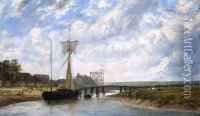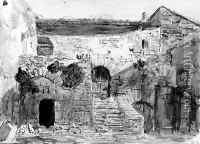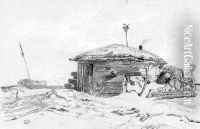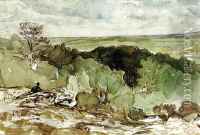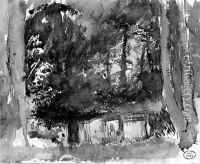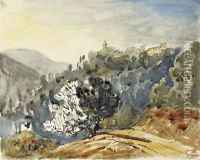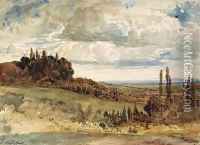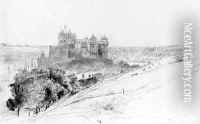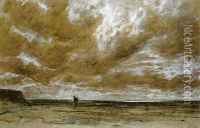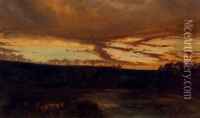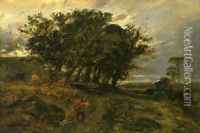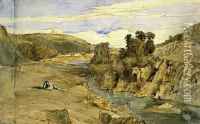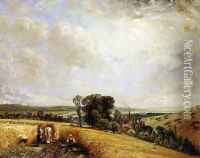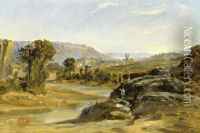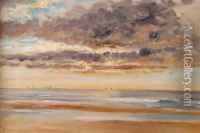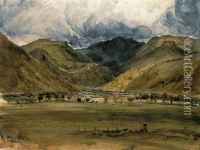Paul Huet Paintings
Paul Huet was a French painter and printmaker born on October 3, 1803, in Paris. He is recognized as a central figure in the Romantic movement in France and is particularly known for his landscape paintings that emphasized dramatic and moody elements, which was a departure from the neoclassical tradition of the time.
Huet received his initial training in the studio of Pierre-Narcisse Guérin, where he was a contemporary of Eugène Delacroix, another leading Romantic painter. He later studied at the École des Beaux-Arts in Paris. His early work was influenced by the classicism of his teachers, but he gradually developed a more personal style, influenced by the English landscape painters such as John Constable.
In the 1820s, Huet began exhibiting at the Paris Salon, where his landscapes drew attention for their dynamic compositions and vigorous brushwork. He became associated with the Barbizon School, a group of artists who advocated for plein air painting and a return to nature, although Huet retained his distinct romantic sensibilities.
Throughout his career, Huet traveled extensively in France, capturing its varied landscapes from the Normandy coast to the forests of Fontainebleau. His approach to landscape painting was innovative, combining close observation of nature with a sense of poetic melancholy. He was an important precursor to the Impressionists, influencing the next generation of landscape painters with his treatment of light and atmosphere.
Huet's works are characterized by their energetic technique and the emotional resonance of the scenes depicted. He often used a palette knife to apply paint, creating textured, expressive surfaces that enhanced the atmospheric quality of his scenes. Despite his contributions to landscape painting, Huet did not achieve significant commercial success during his lifetime.
Paul Huet's impact on the development of French landscape painting was significant, and his works are now held in many major museums around the world. He died on January 8, 1869, in Paris, leaving behind a legacy that would inspire artists for generations to come.
